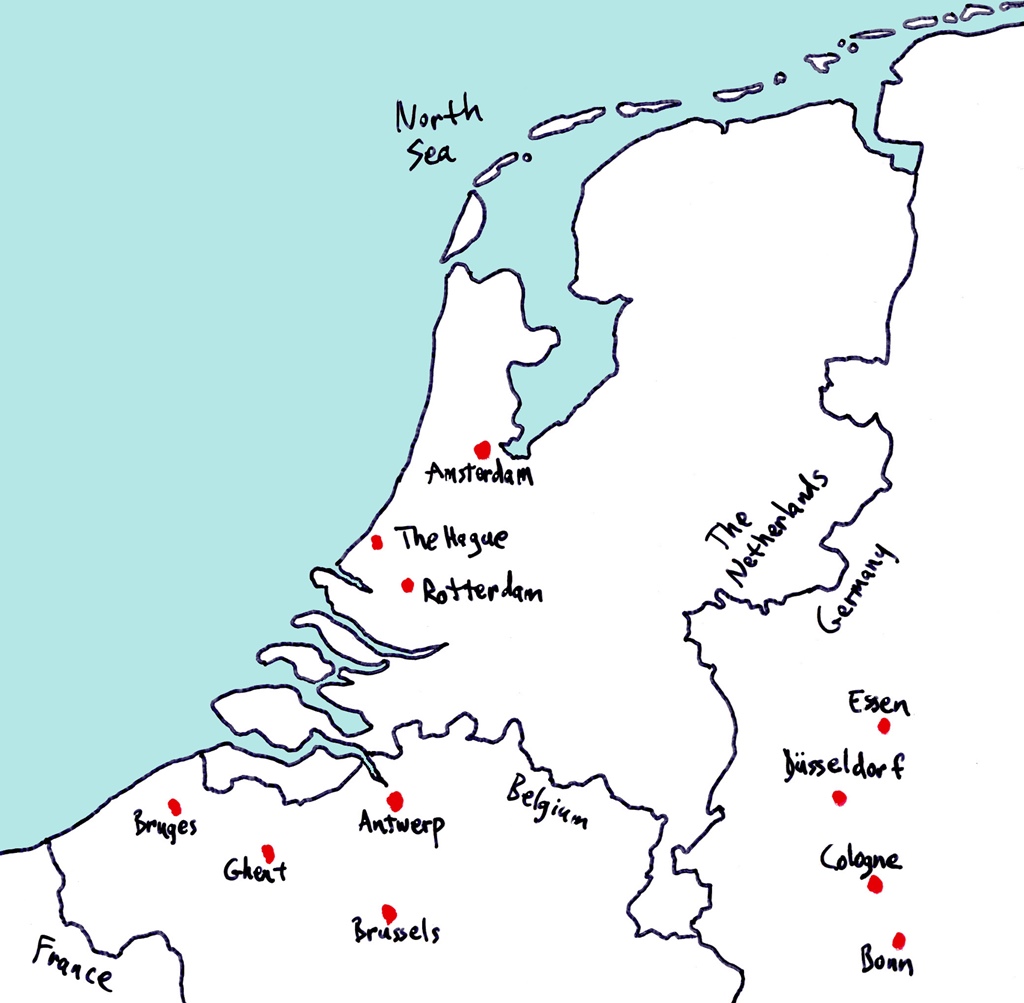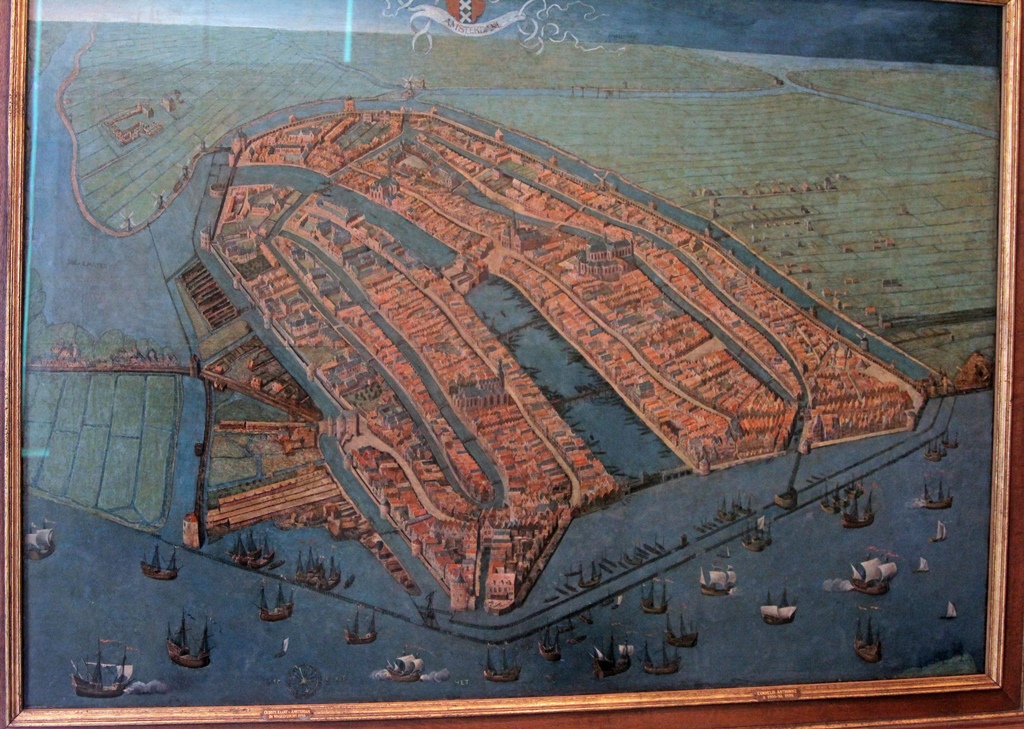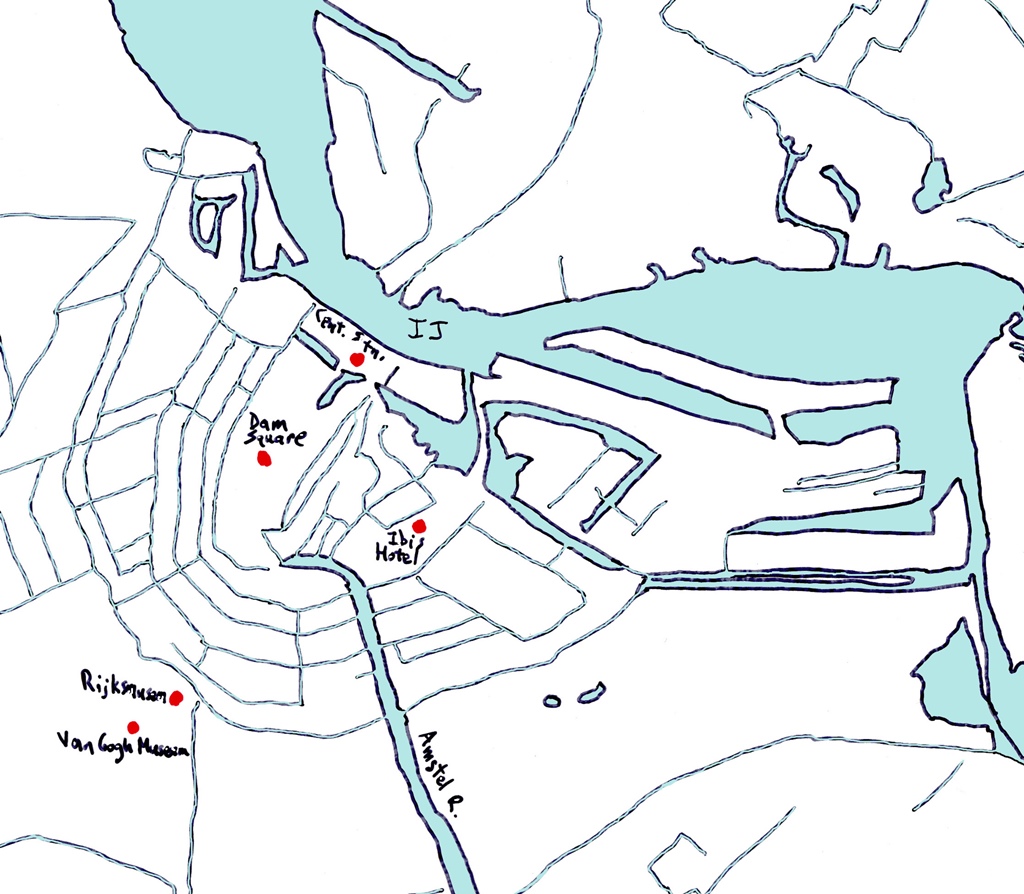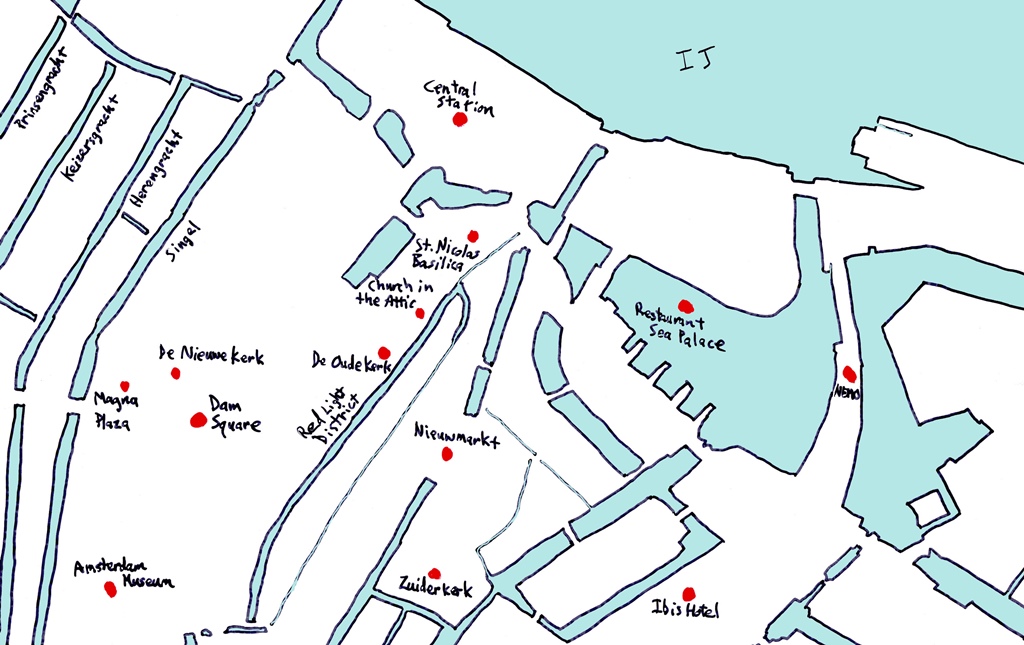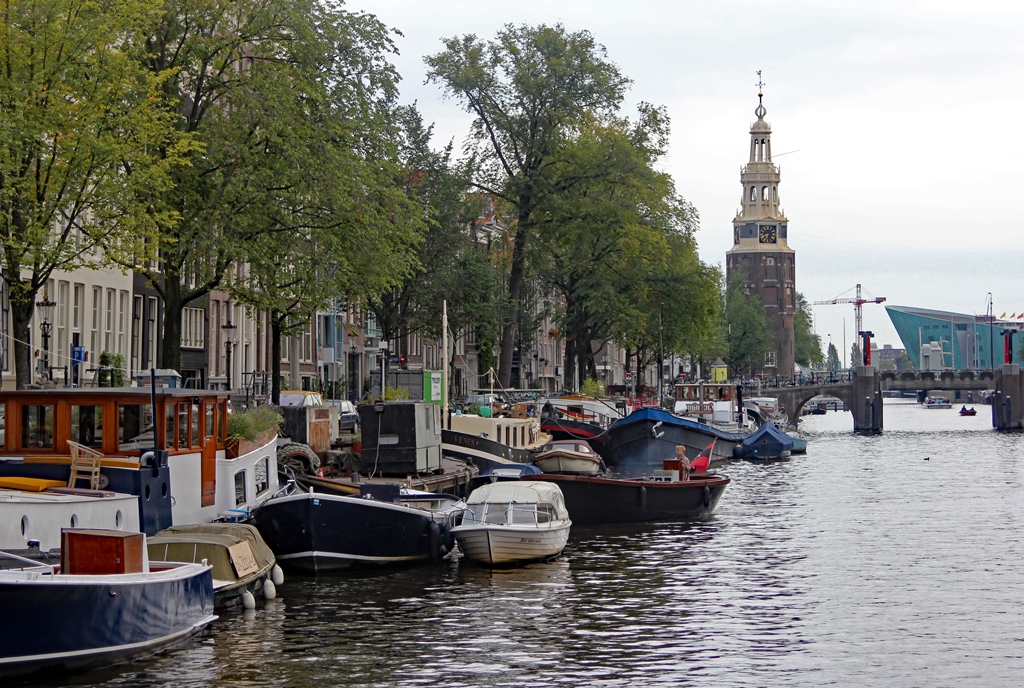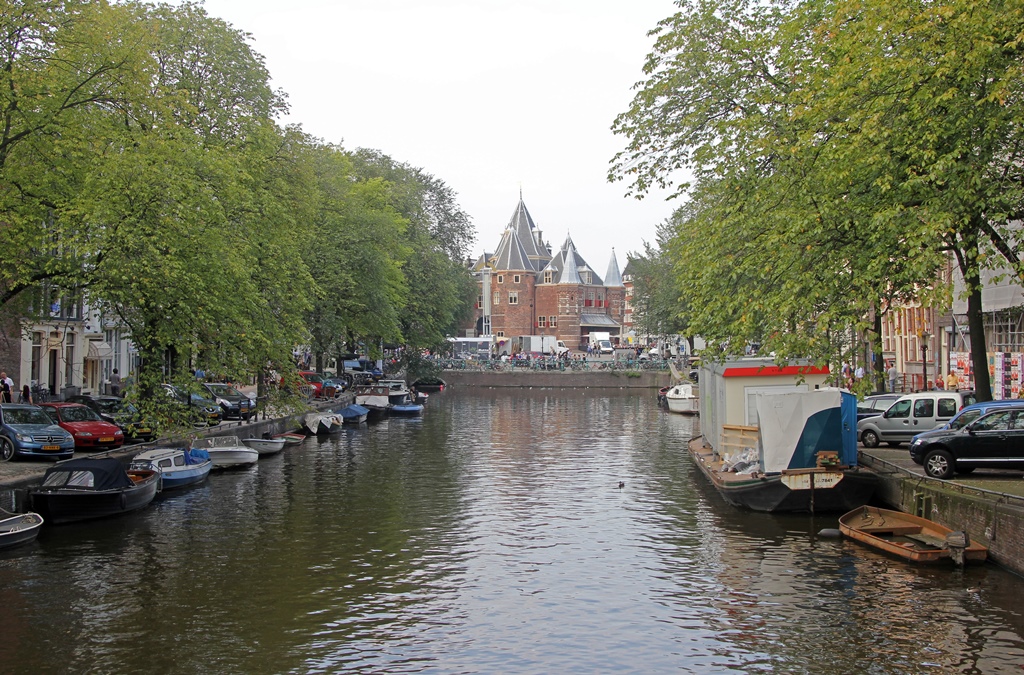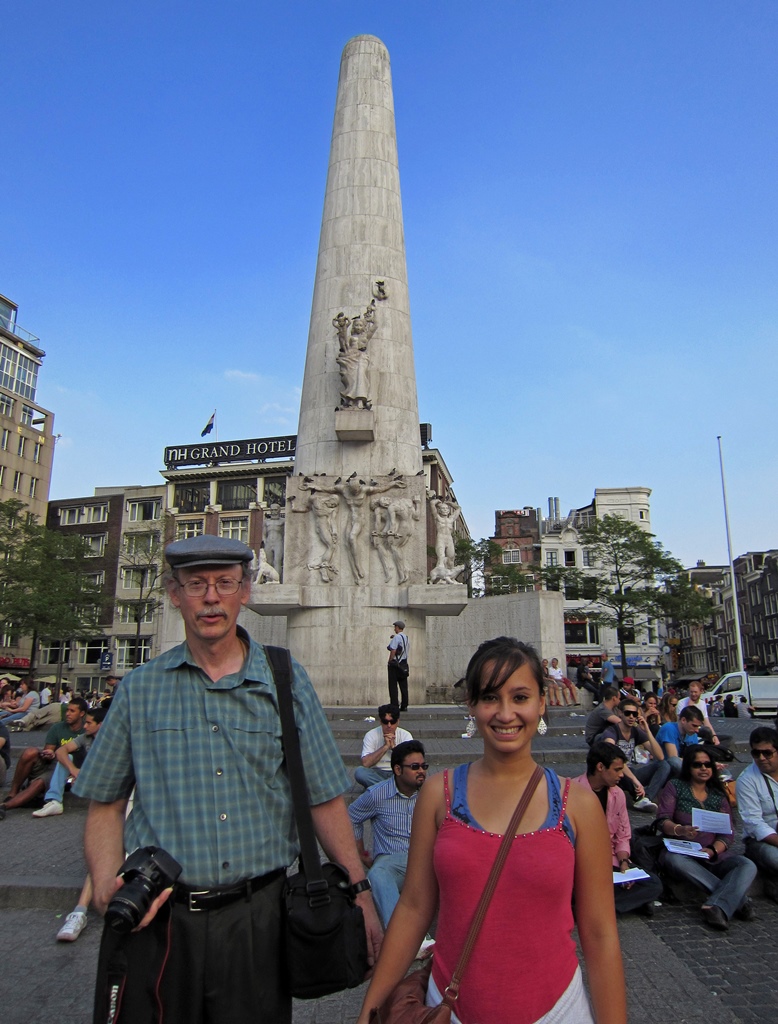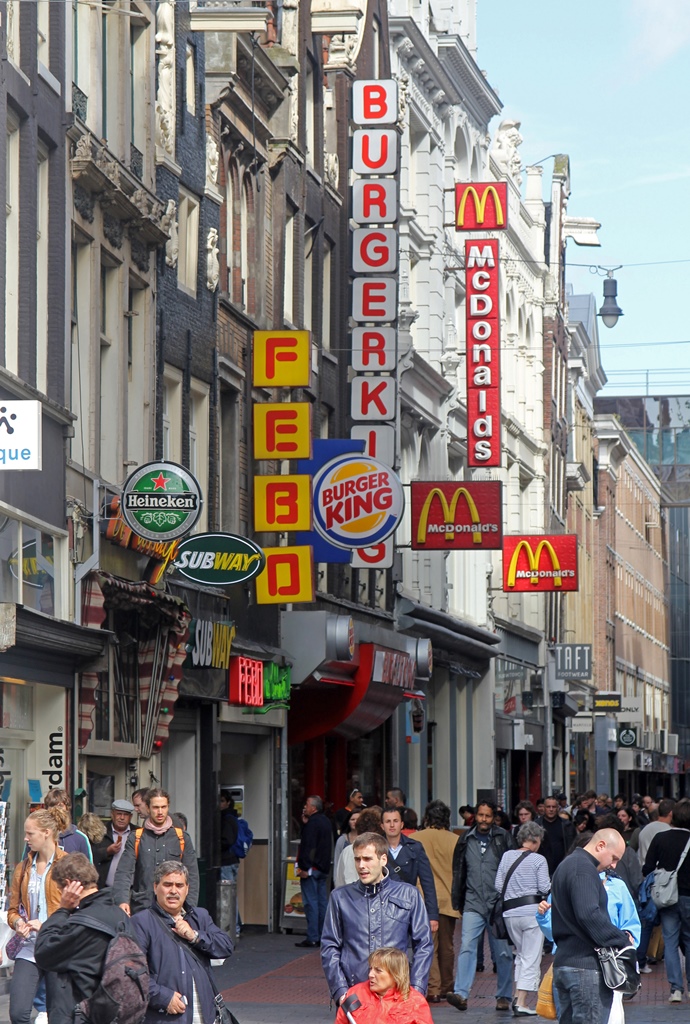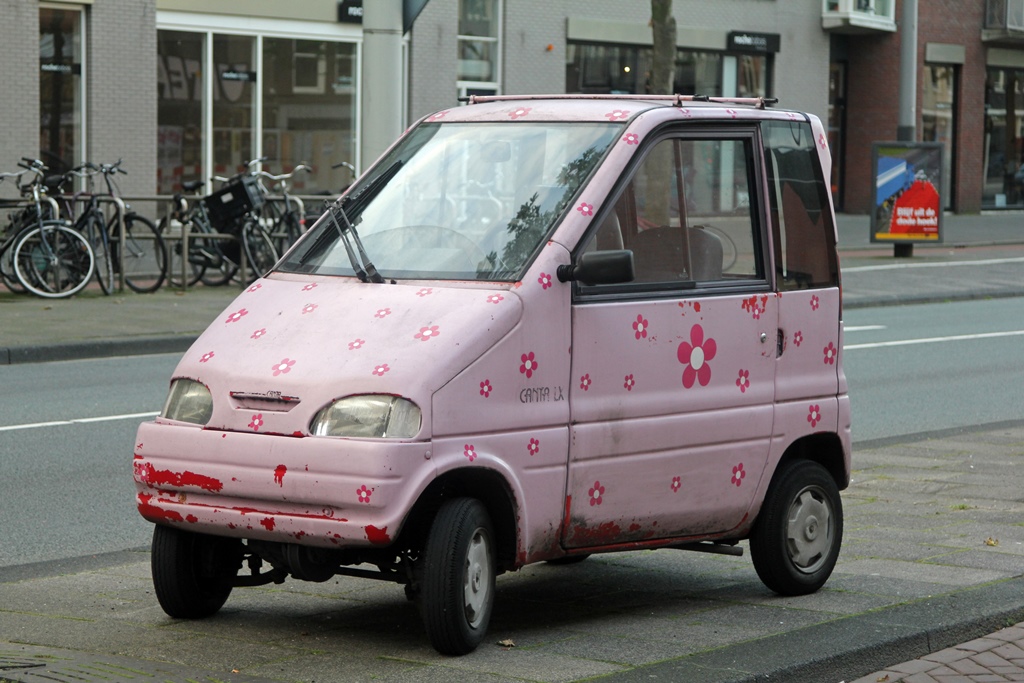The Netherlands
Our next and final destination for our 2011 trip was the city of Amsterdam, a reasonably
short train ride north from Brussels. A popular destination, Amsterdam is the capital
city of the Netherlands (but not the seat of government, which is The Hague – go figure),
and has much to recommend it. There are historical buildings and world-class museums,
and a beautiful network of canals. But when many Americans (and maybe people from
other countries too) hear the word "Amsterdam", they first think of some of the other,
more notorious attractions of the city. In particular, they think of the relaxed
enforcement of drug laws, and of the city's famous red light district. At the risk of
being the most boring tourists ever, I will have to admit that we didn't look into either
of these phenomena, though we were certainly aware of their existence going in. But one
could not help but notice the many "coffee shops", where the menus list varieties of
intoxicating inhalables (one has to wonder where one goes for actual coffee – maybe
Starbuck's).
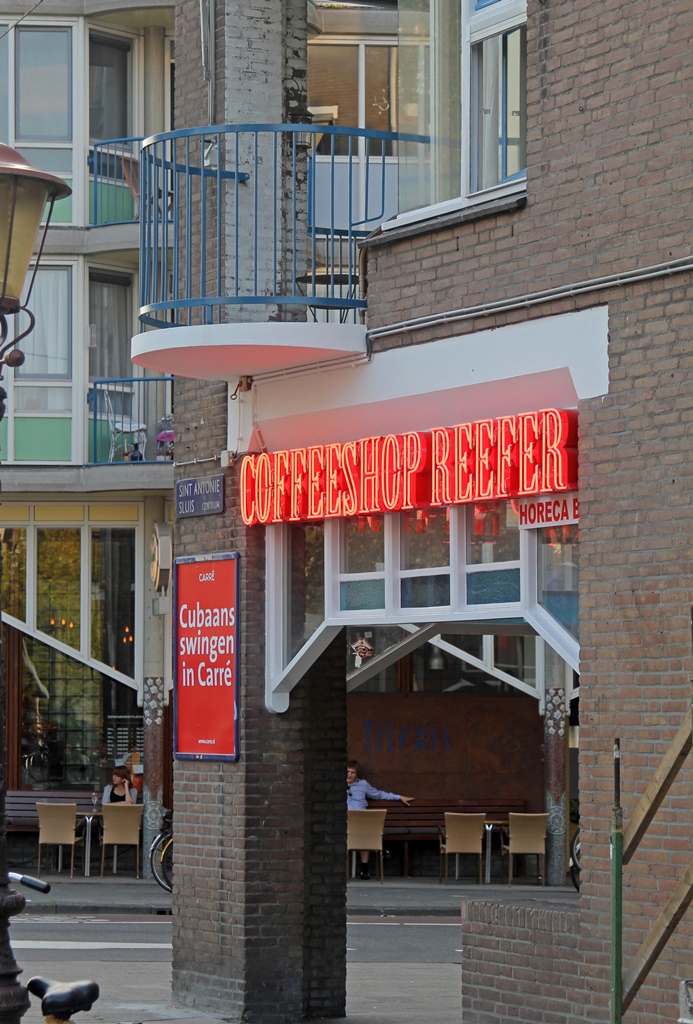
A 'Coffee Shop'
And though we knew and avoided the general location of the red light district, we
did once take a shortcut through a narrow, dimly lit street which turned out to be
on the southern fringe of the district. If you'd like to experience an awkward
tourist moment sometime, try walking with your wife and daughter down a street where
there are store windows displaying women in lingerie for sale (the women, not the
lingerie), or rather for rent for short periods. Sorry, no photos of this
attraction – I understand they really don't like that.
Anyway, if you're looking for details about these sorts of points of interest,
you’ve come to the wrong website. If you've been reading much of the narrative, you
probably already know this isn't the sort of thing we do on our vacations. We're
mostly interested in churches and museums and scenery and historical stuff.
Unfortunately, some of the churches and museums in the city have strict
no-photography rules, so you might find that the Amsterdam section of this website
is shorter than the sections for most of the other covered cities. But here's
some historical stuff:
The details of the founding of the city of Amsterdam seem to be on the muddled side.
But geographically, it seems there was once a landlocked lake in the north of what
is now the Netherlands, when a series of catastrophic floods struck in the last part
of the 12th Century. This lake, known as the Zuiderzee (or "south sea"),
expanded hugely as a result, and eventually a connection was formed with the North
Sea. Also formed by the floods was an estuary emptying into the Zuiderzee, known
as the IJ (pronounce "eye"), into which some local rivers flowed. One of
these rivers was a shortish river from the south, known as the Amstel. There is a
legend that two fishermen trying to escape a storm on the Zuiderzee landed at a
point near the mouth of the Amstel, and that their dog threw up on getting out of
the boat. The city of Amsterdam was eventually established on this spot.
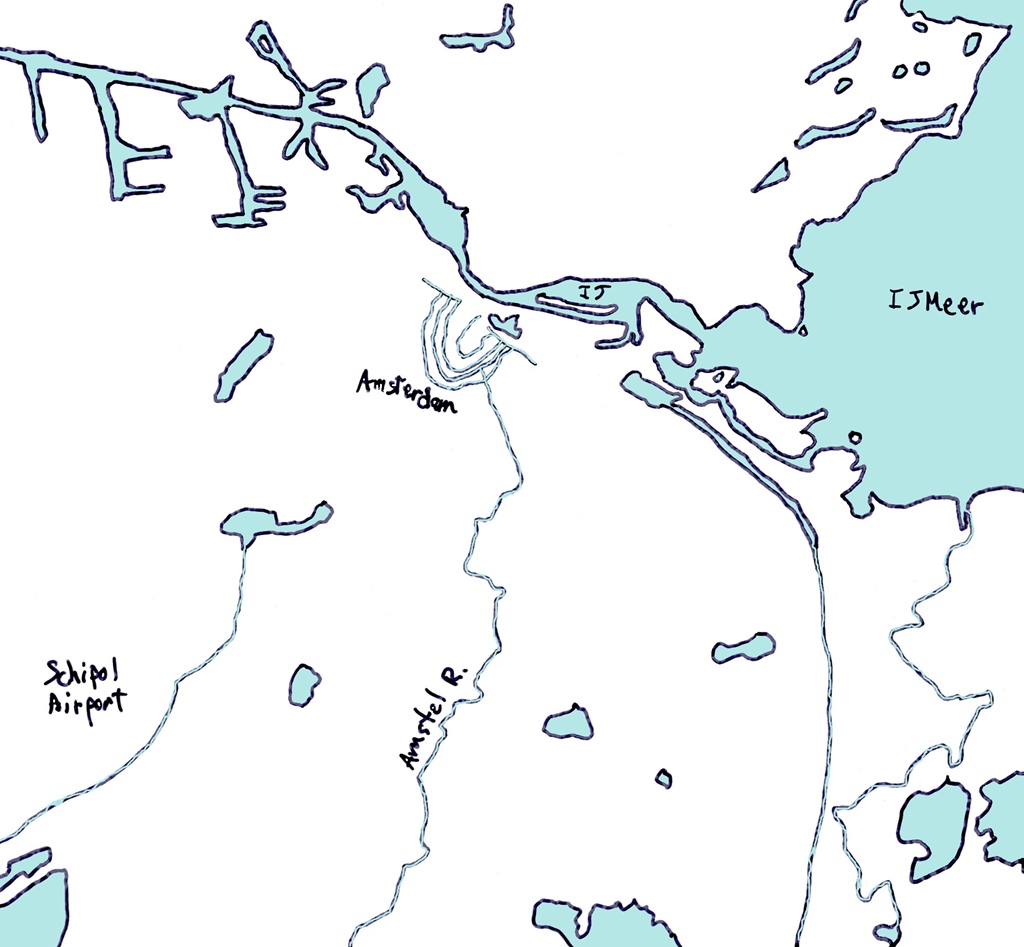
Vicinity of Amsterdam
Whether there is any truth to this is murky, but it seems that a trading post was
set up in the area in the early part of the 13th Century. Since the 11th Century
farmers had been building dikes at various places across the local terrain in an
attempt to control the local waterways, which had a bad habit (if you're a farmer,
or actually anyone trying to live in the area) of moving from one place to another
unpredictably, and some good ones were built near the trading post on the Amstel.
This led to the founding of the city of Amsterdam ("dam on the Amstel") in the late
13th Century. From the 14th Century on the city flourished, through trade with the
Hanseatic League and (eventually) across the world, via the Dutch East India and
Dutch West India Companies. The world's first stock exchange was established in
Amsterdam in 1602.
View of Amsterdam, Cornelis Anthonisz (1538)
In the 17th Century it was decided to re-plan the canal system that had evolved
in the city to better support commerce and defense, so the city planned and began
digging a system of concentric canals which remains (with a few alterations) in
the 21st Century.
Canals and IJ
Which is when we were making our way north by train from Brussels. The train
dropped us at Amsterdam’s Central Station, and we caught a bus to our hotel,
the Hotel Ibis on Valkenburgerstraat. After a short rest, we went out
exploring (with a map!).
Central Amsterdam
We found the canals and the bridges that crossed them to be inescapably picturesque.
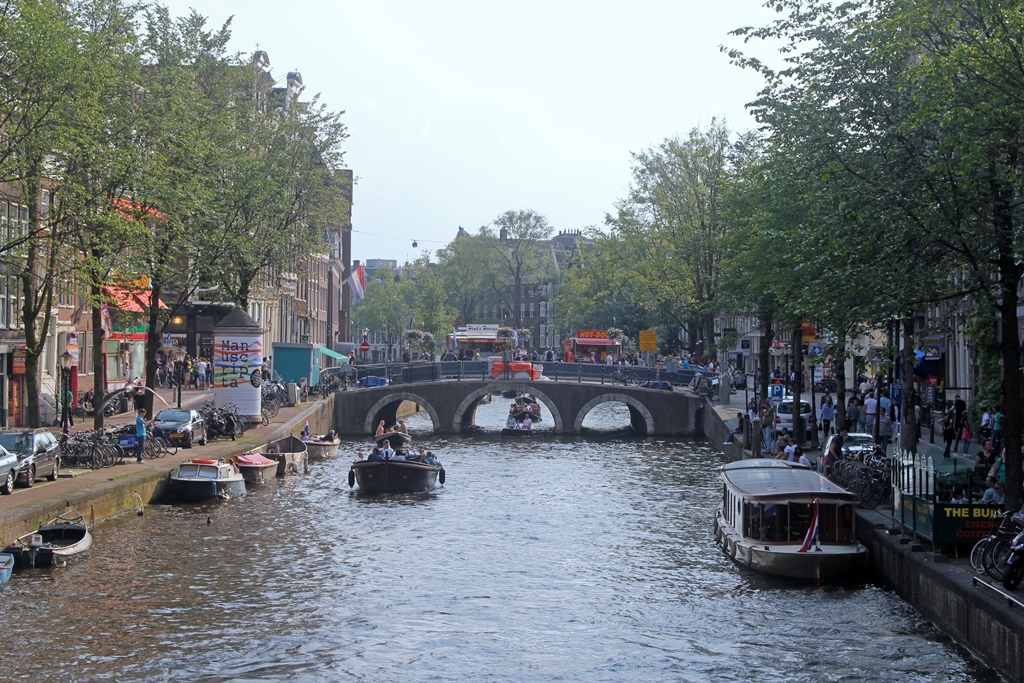
Oudezijds Voorburgwal
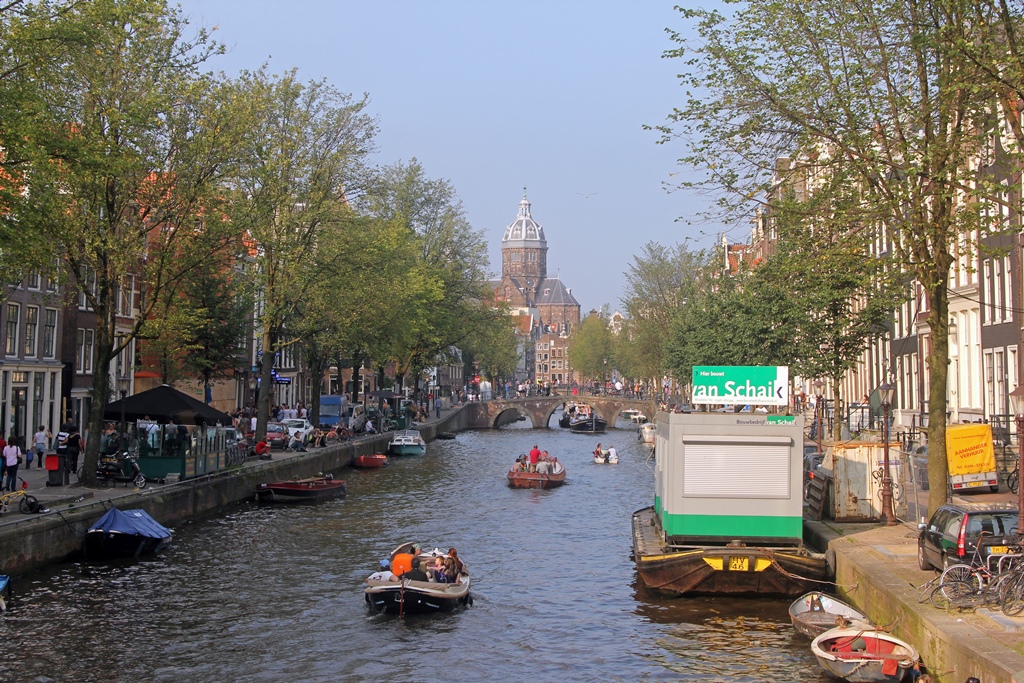
Basilica of St. Nicholas and Oudezijds Voorburgwal
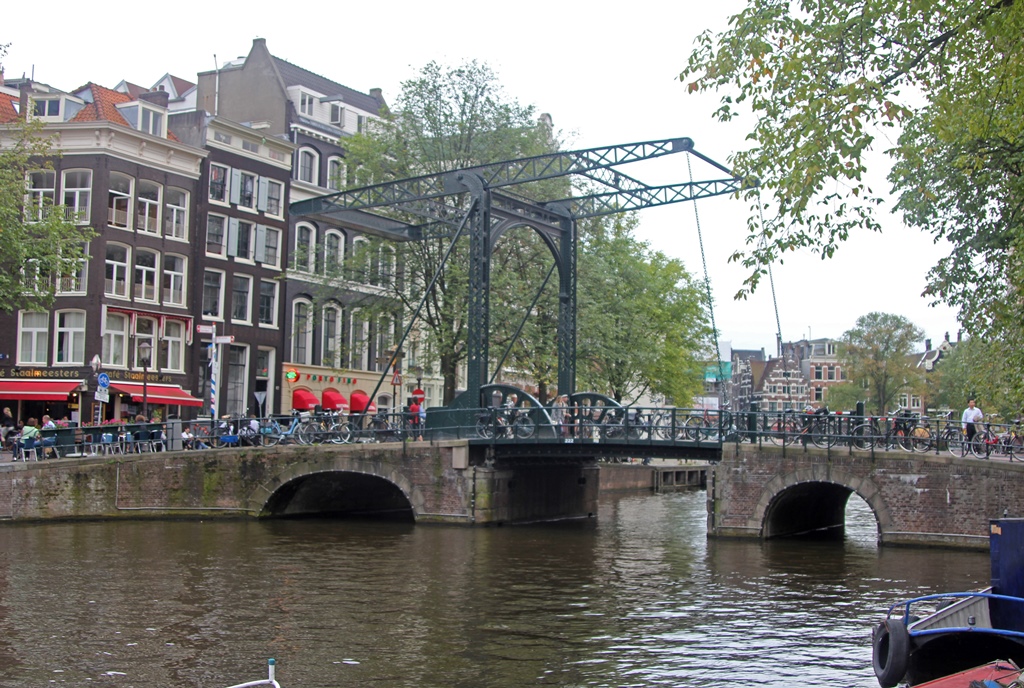
Staalstraat Bridge Across Kloveniersburgwal
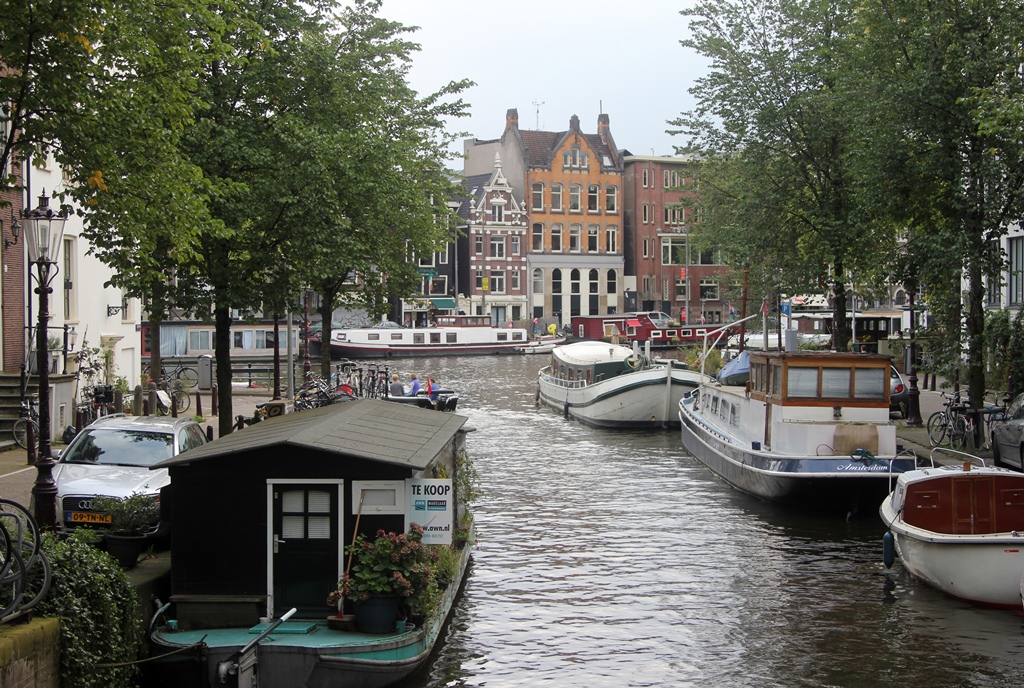
Groenburgwal Canal
Oudeschans Canal with Montelbaanstoren Tower and NEMO
Our wanderings eventually took us to a square called the Nieuwmarkt ("new
market" – there is still a daily street market here). There is an obvious
landmark in the otherwise empty square – a distinctive building called the Waag,
or weigh house. This building dates back to the 15th Century, when it was built as
a gate in the city wall. The wall was demolished long ago after the city outgrew its
boundaries, but the Waag remains, having been used at various times as a guild hall,
an anatomical theater, a building where goods were weighed (hence the name) and a
museum, among other things. At the moment, there are offices upstairs and a café
downstairs.
Nieuwmarkt from Kloveniersburgwal
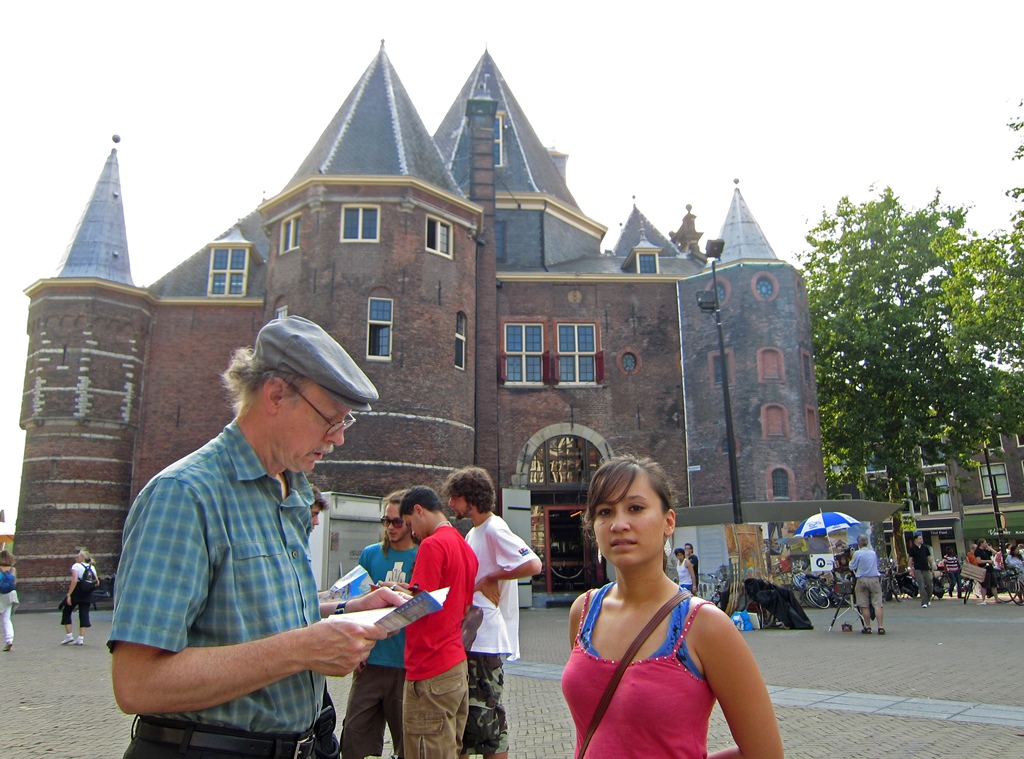
Bob and Connie and Waag, Nieuwmarkt
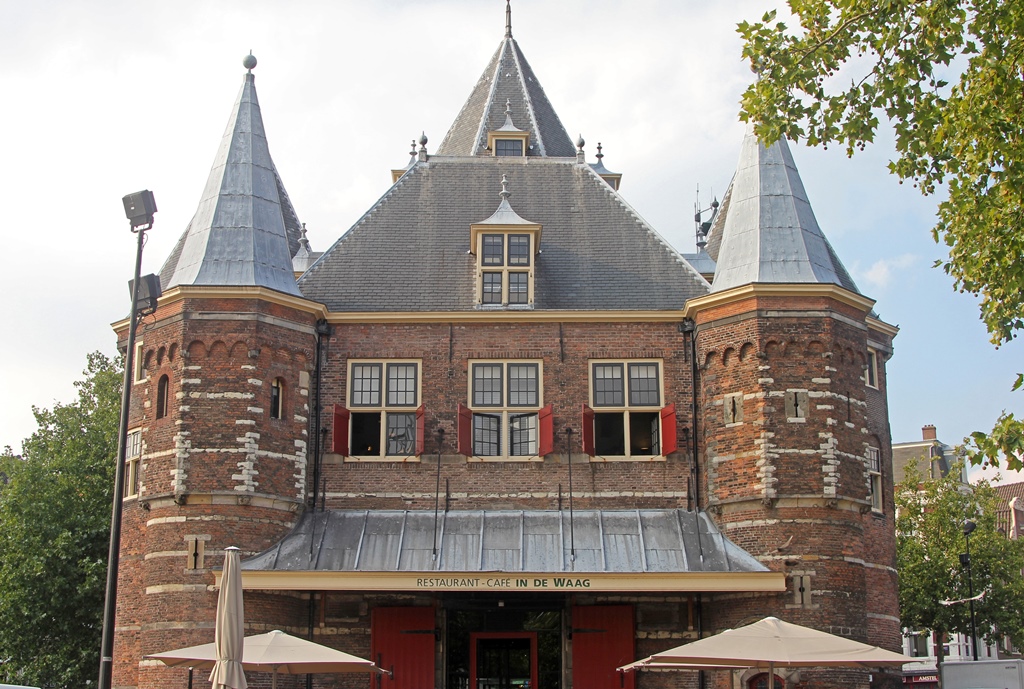
Restaurant-Café In de Waag
From the Nieuwmarkt we made our way to the center of things, the Dam Square.
The Dam Square was the site of the original dam on the Amstel. Over the centuries,
the dam was widened and broadened, and adjoining canals were filled in, until all
water was pushed out to a respectful distance. The square is now quite large, with
a number of significant buildings surrounding it.
At the west end of the square is the Amsterdam Royal Palace, at the disposal
(mainly for ceremonial purposes) of the reigning monarch, Queen Beatrix during our
visit and King Willem-Alexander since her abdication in 2013. The palace was closed
to visitors during a renovation from 2005 to 2009, but has since been reopened.
During our visit it was surrounded by a fence with messages on it insisting that the
palace was open. But to us it looked like they were still working on it, so we
didn't visit.
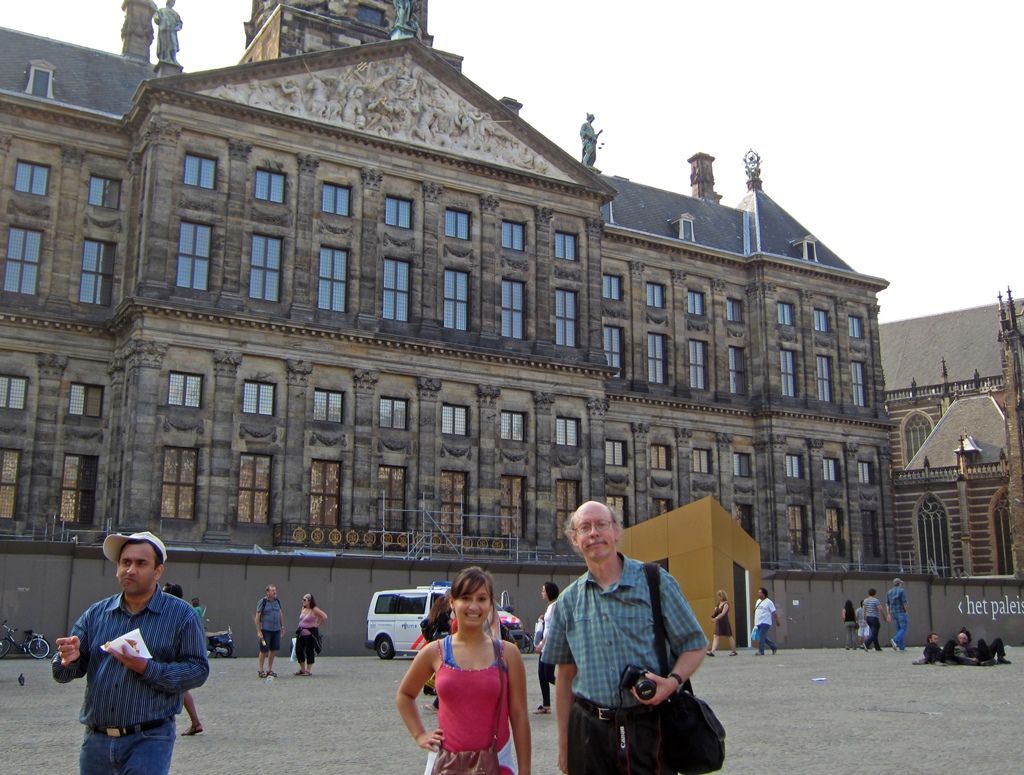
Connie and Bob and Royal Palace
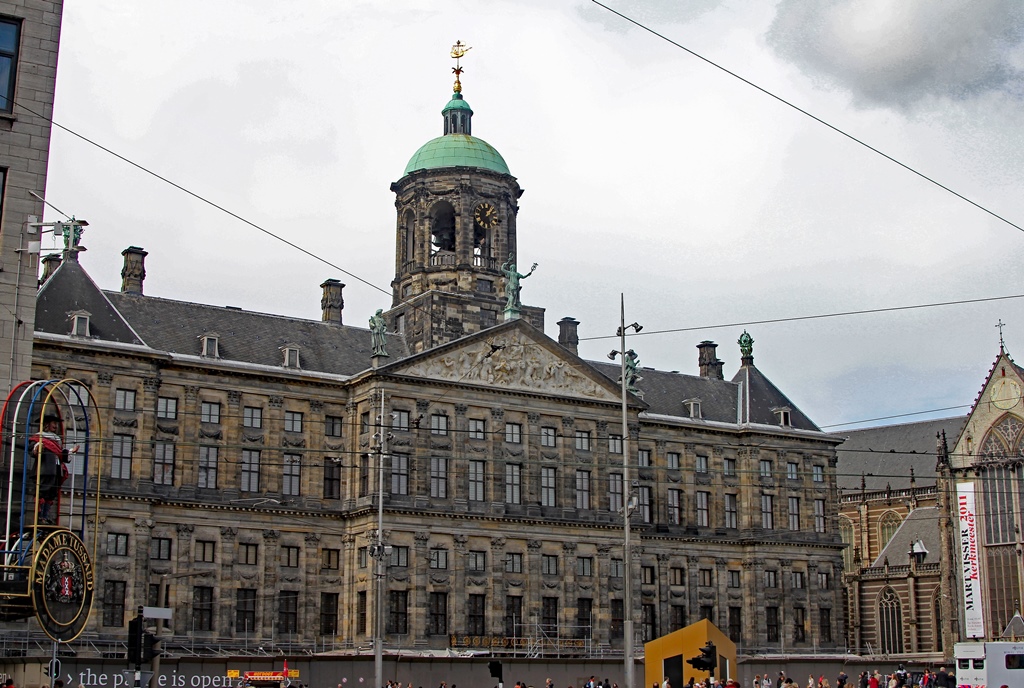
Royal Palace
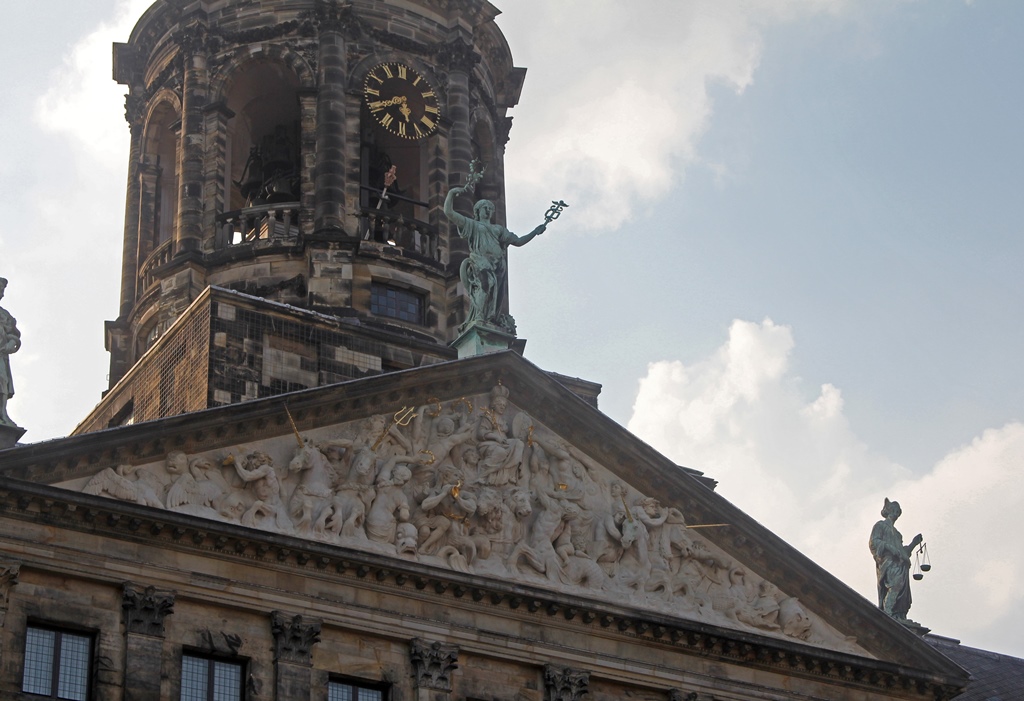
Cupola and Pediment, Royal Palace
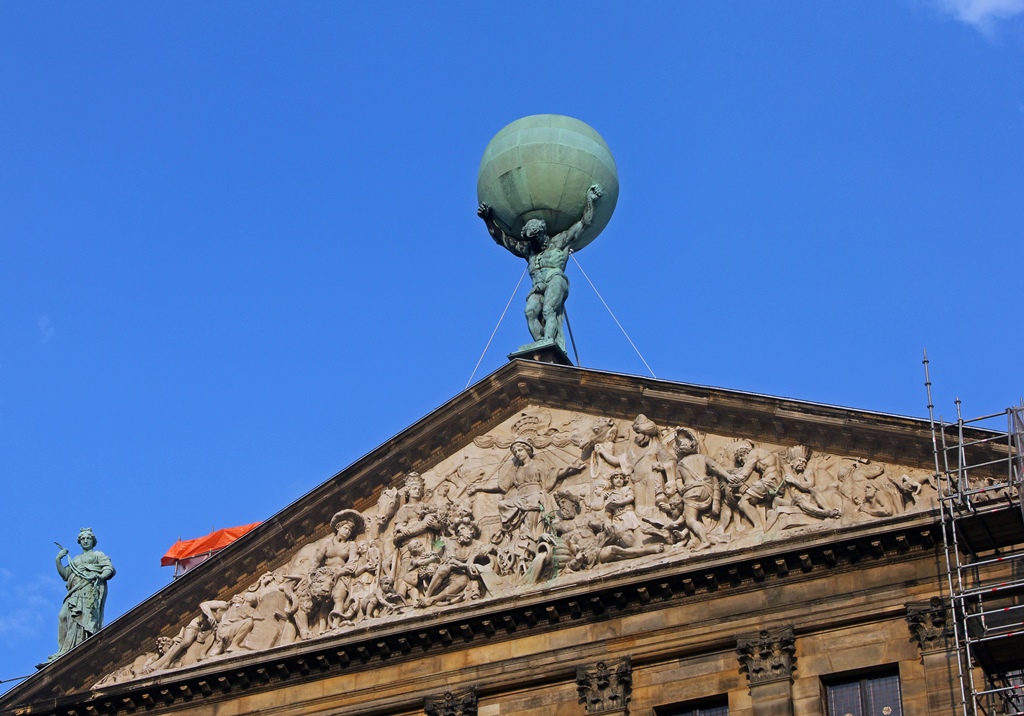
Back Pediment, Royal Palace
Other buildings around the square include the fancy De Bijenkorf department
store and a Madame Tussaud museum.
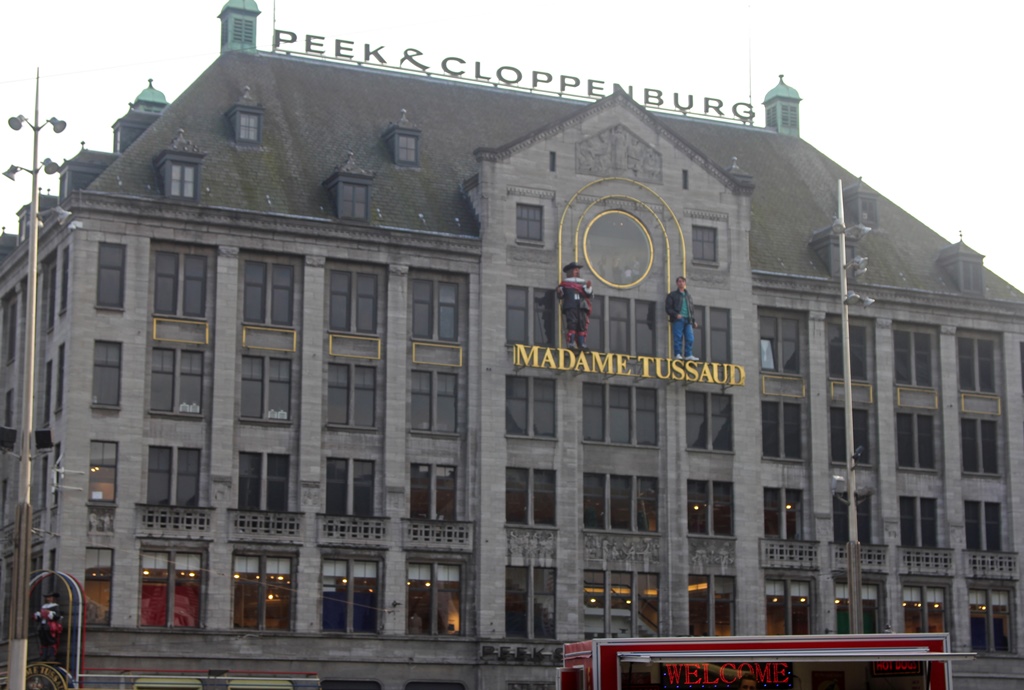
Madame Tussaud Museum
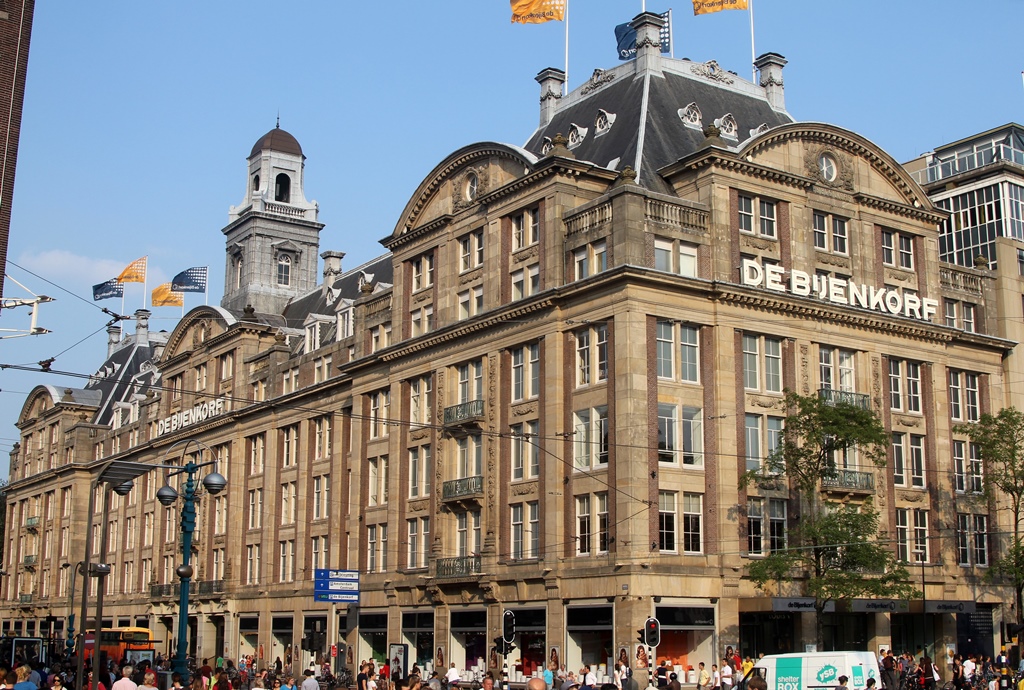
De Bijenkorf Department Store
In the middle of the square is the National Monument, built in 1956 as a remembrance
of the victims of World War II.
Bob and Connie and National Monument
Just off the square, behind the Royal Palace, is Magna Plaza, a smallish
upscale shopping mall.
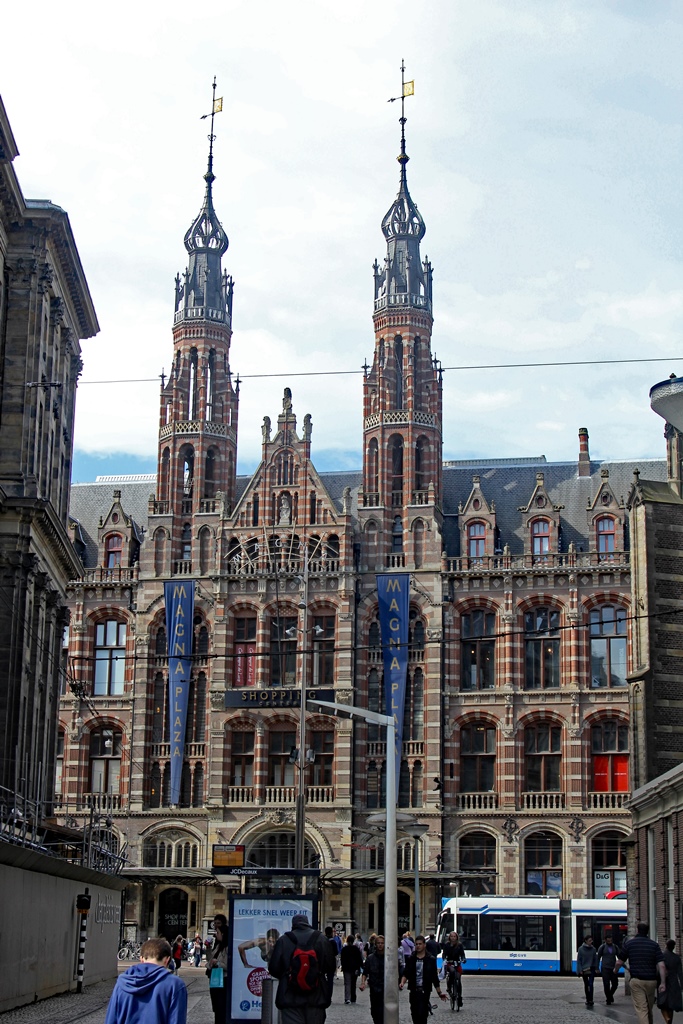
Magna Plaza
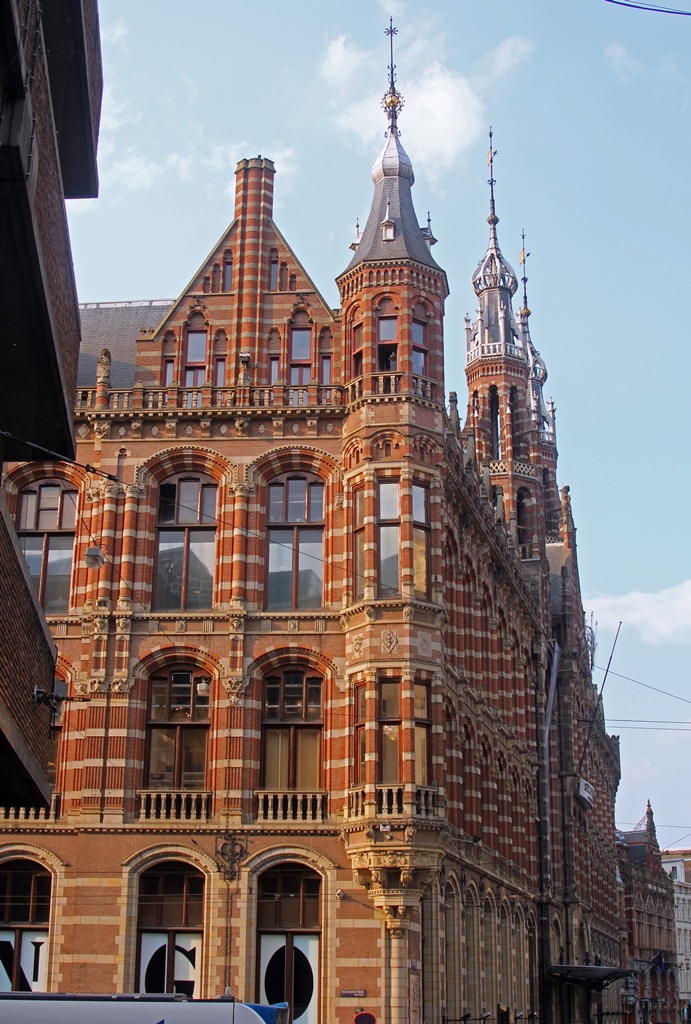
Magna Plaza Shopping Mall
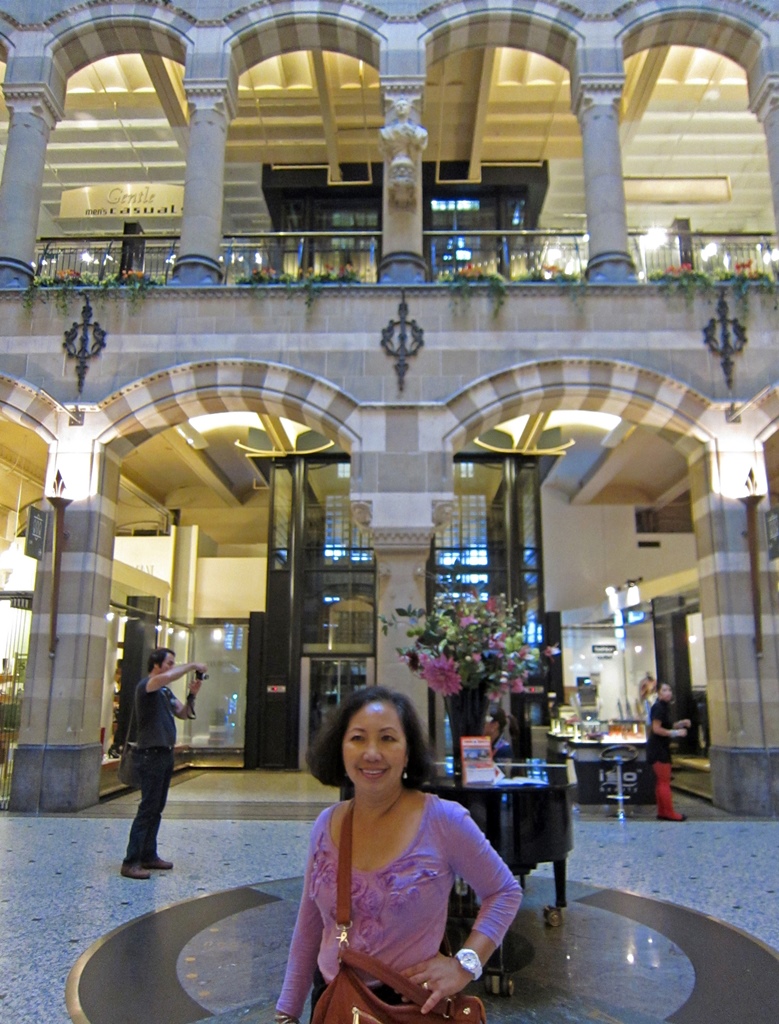
Nella in Magna Plaza
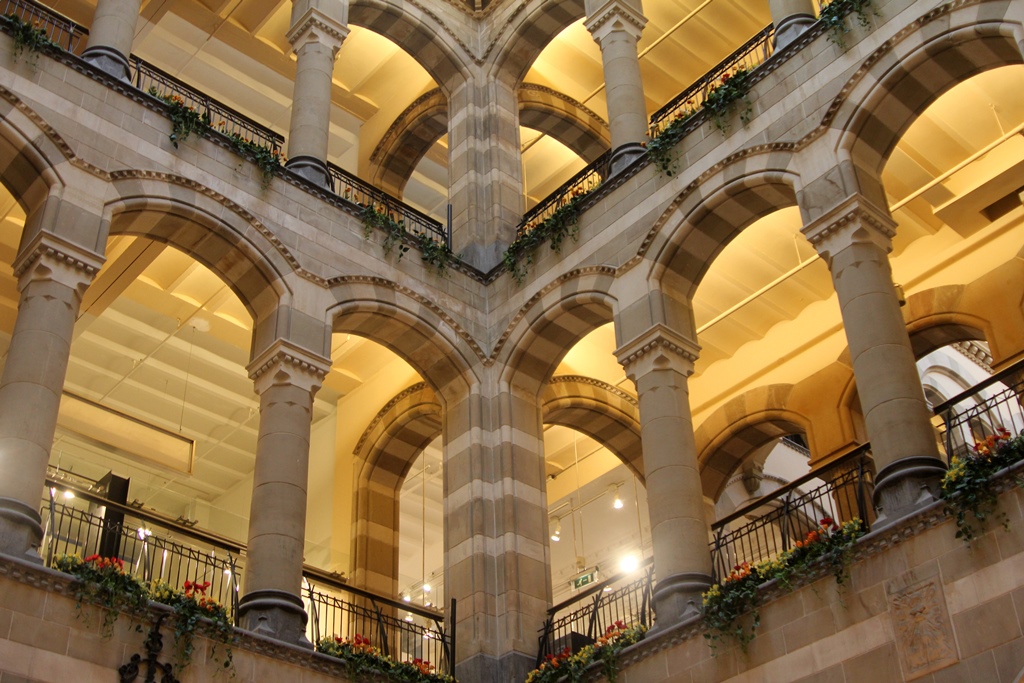
Magna Plaza
At this point we started to make our way back toward our hotel. Commerce is
alive and well in Amsterdam.
Businesses on Nieuwendijk near Dam Square
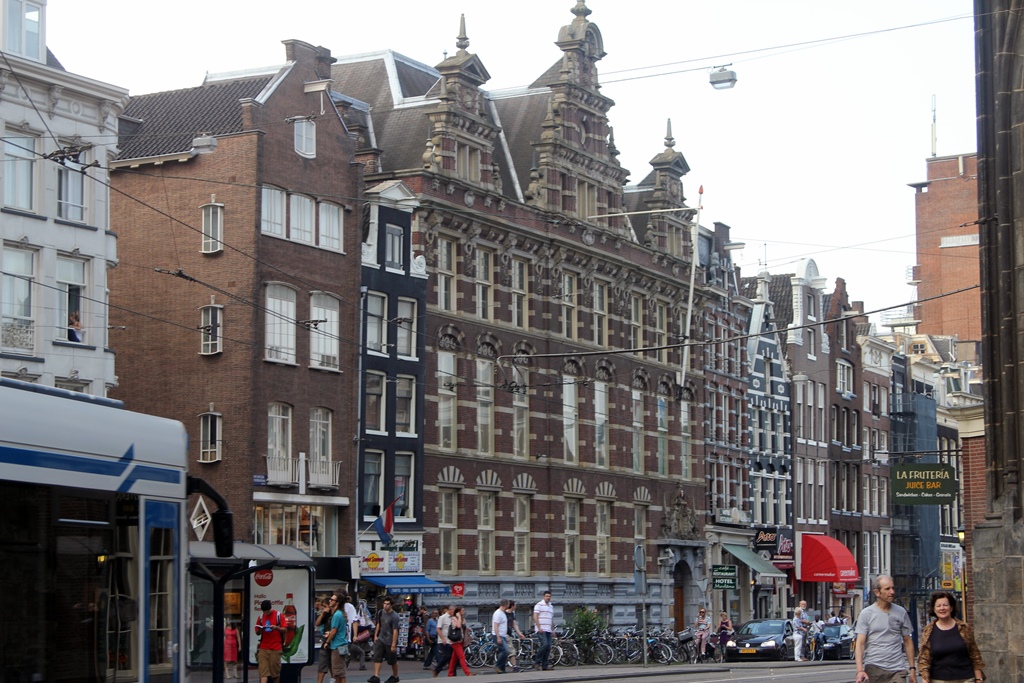
Hotel Mevlana
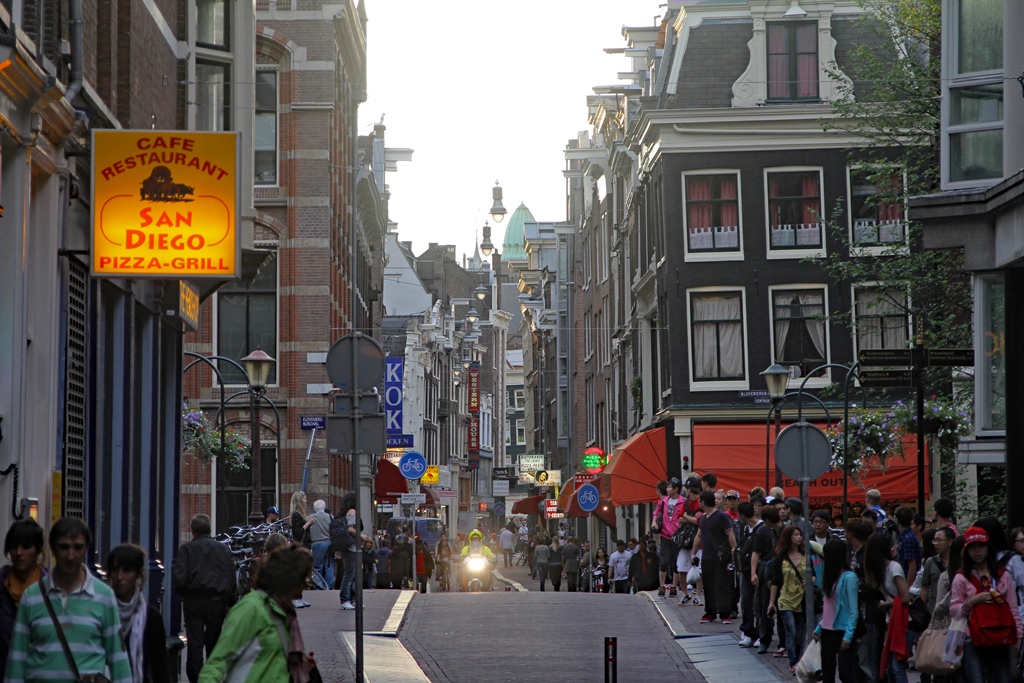
View from Nieuwe Hoogstraat to Oude Hoogstraat
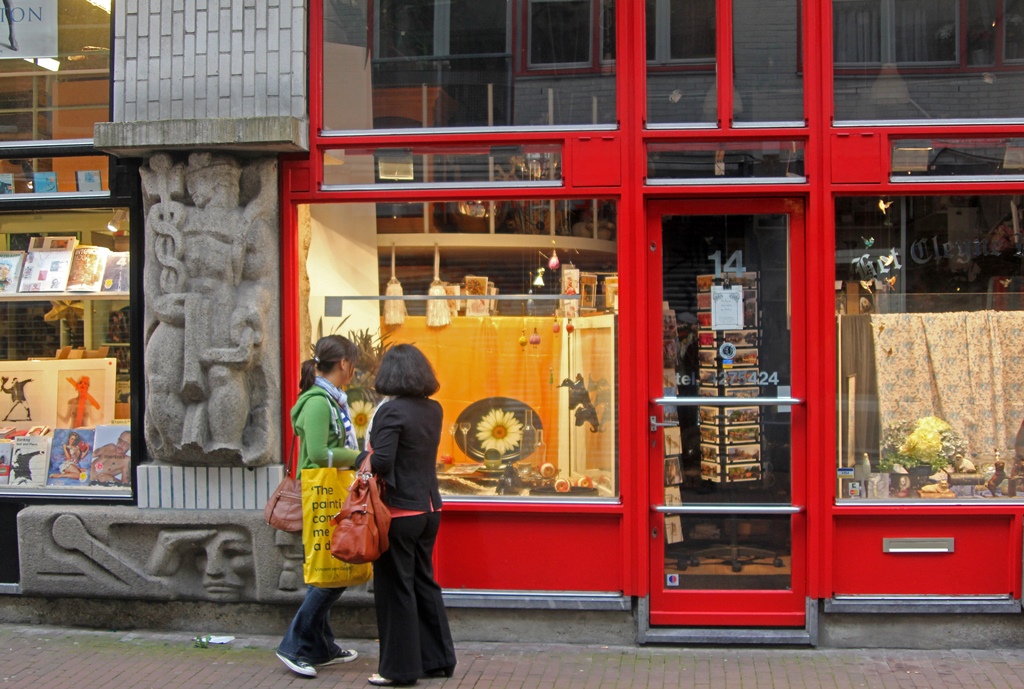
Connie and Nella and Shop on Nieuwe Hoogstraat
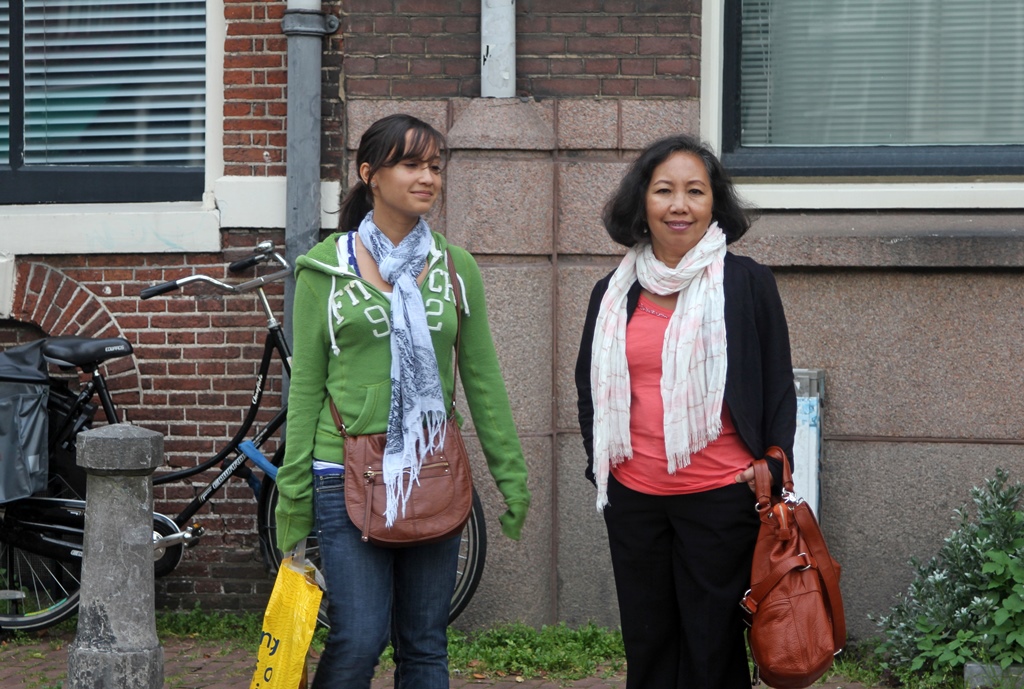
Connie and Nella
On the way, we stopped at a supermarket to buy some drinking water and supplies.
We found the cheese department to be quite impressive. They take their cheese very
seriously – I was admonished to not take photos of the cheese department (too
late!). Maybe they didn't want any of the other markets to steal their cheese
secrets. They’ve probably moved on to new cheese technology by now, so they
shouldn't object to the posting of a couple of pictures:
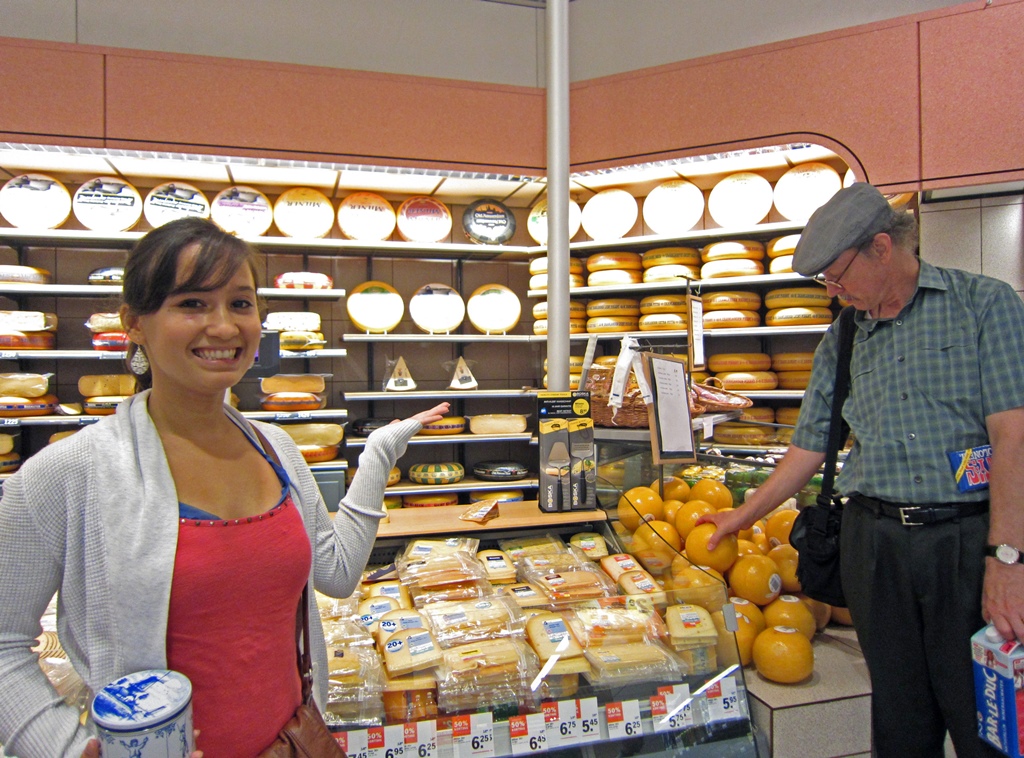
Cheese Section of Supermarket
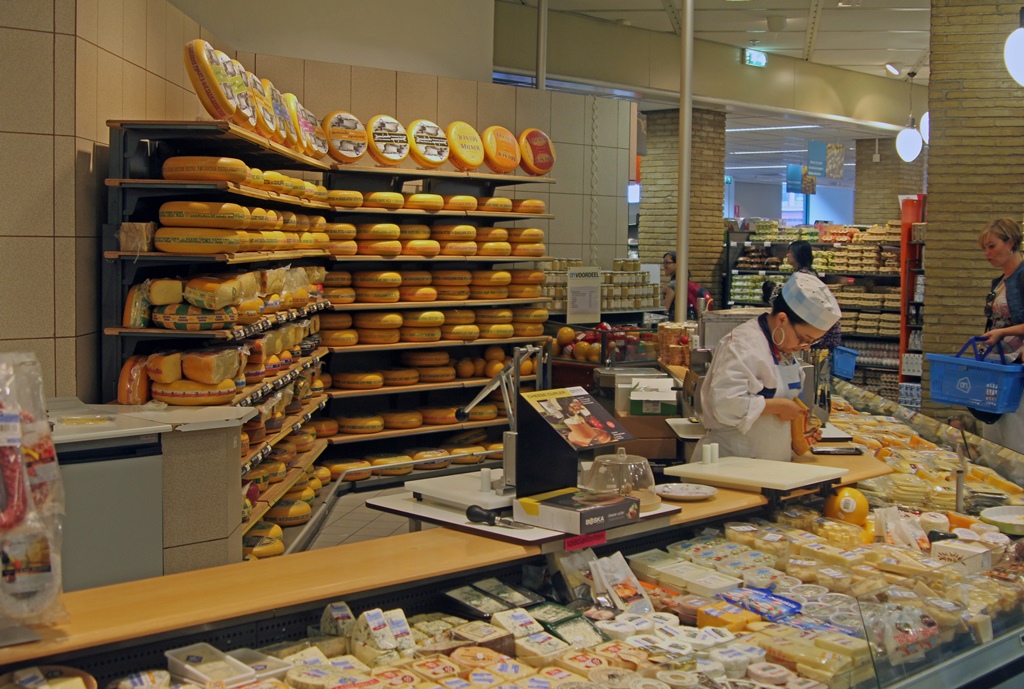
Cheese Department in Supermarket, Nieuwetijds
We walked through the pretty Amsterdam streets, eventually arriving back at our hotel.
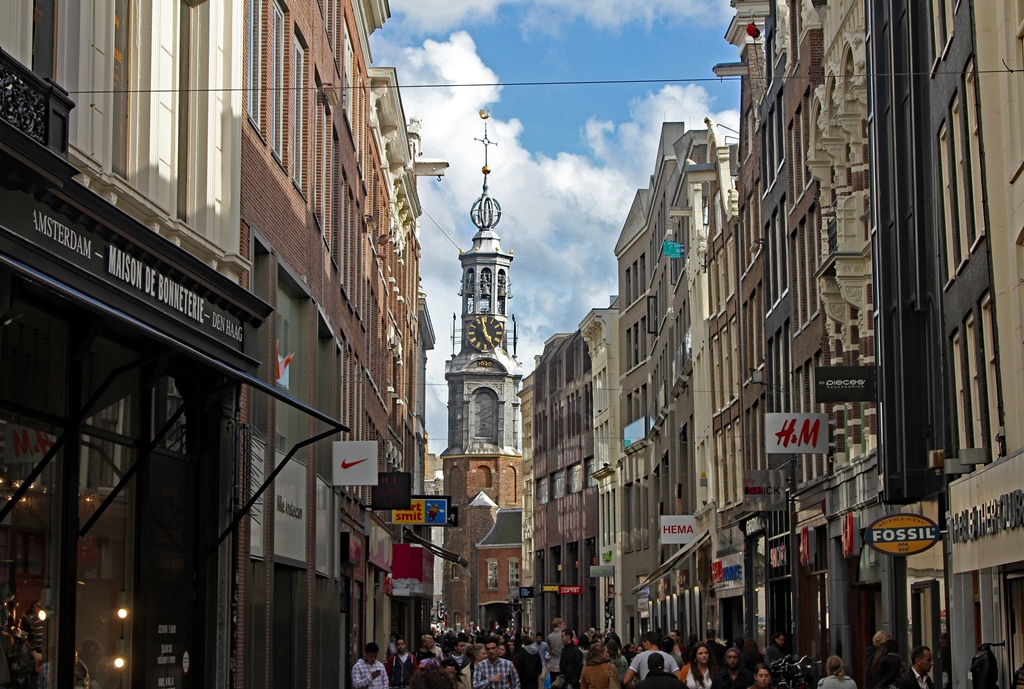
Munttoren and Kalverstraat
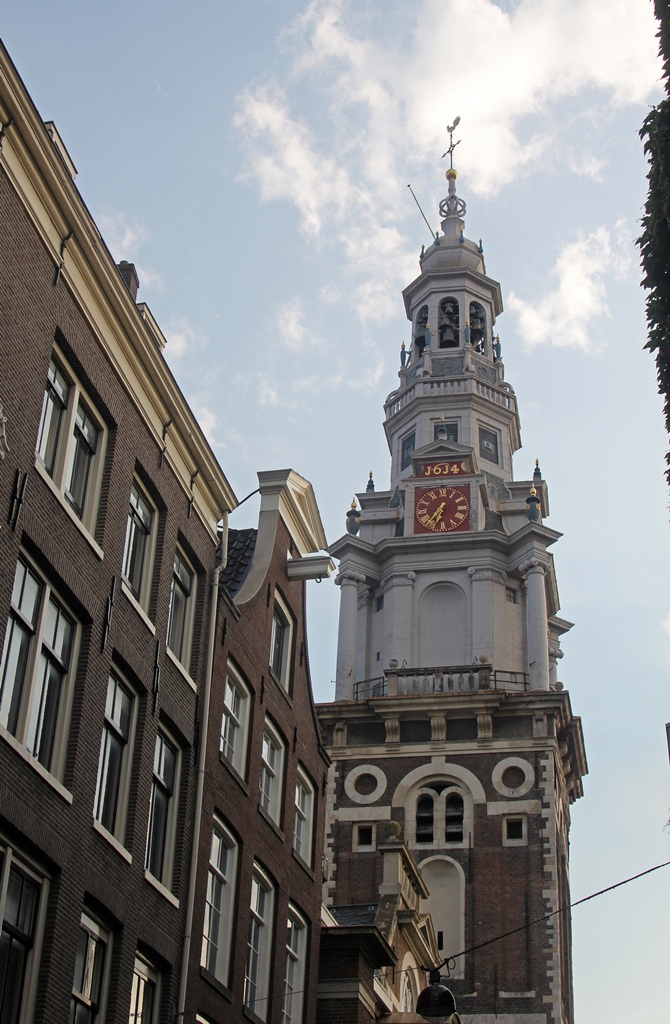
Tower of Zuiderkerk
Across from the hotel we noticed an abbreviated pink car, a Canta LX. Apparently
these cars were built to be tiny – you could fit one inside of a Smart car. They
are apparently custom-built for disabled people – there is a model on which the
back opens, and a wheelchair can be driven directly into it, so the driver never
has to leave the wheelchair. The imposing 160 cc engine of the LX delivers a top
speed of 30 MPH, and it is not necessary to have a driver's license to operate
one. It is also legal to park a Canta on the sidewalk.
Pink Canta LX
After marveling at the Canta, we returned to our room. We needed to rest up for our
next day's activities, which we planned to start with a visit to Amsterdam's
world-class art museums.

